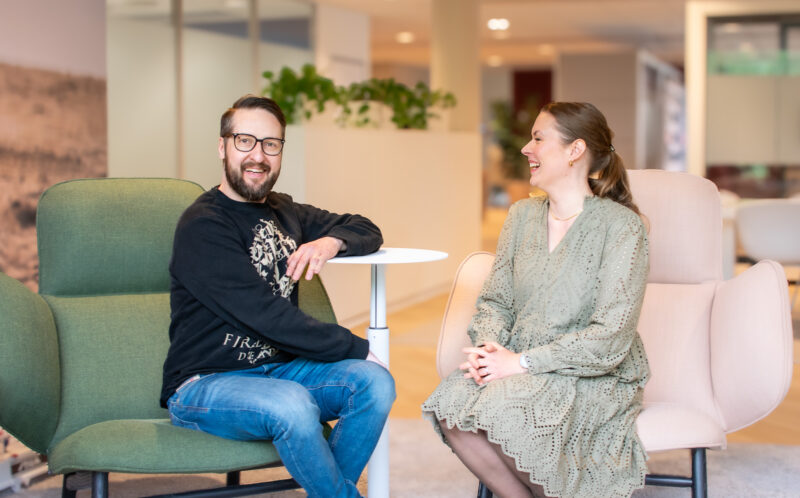Why should the employee experience be measured alongside the customer experience? This is how to ensure a long-term partnership
Simultaneously measuring the customer’s experiences and the company’s customer-facing staff provides new tools for managing collaboration. At the same time, it helps to develop the customer relationship into a closer partnership, argue Sami Karkkila and Liisi Koivu of Sofigate.
Every successful business understands the value of customer experience. The customer experience is particularly important in service businesses. The more deeply a service company understands its customers and business, the better it can deliver value to the customer and help them improve their performance.
This is why the best results are often achieved through long-term relationships, which are no longer really about a supplier-buyer relationship but rather a partnership where companies share knowledge and expertise openly. As the boundaries between companies dissolve and sometimes almost disappear, everyone can focus more effectively on their core business.
It is no wonder that customer satisfaction is one of the most important indicators of service companies’ performance. In recent years, however, there has been a shift from looking at the Net Promoter Score alone to a more general measure of customer experience. Customer relationship management requires an increasingly refined understanding of how the customer company perceives the different aspects of the relationship.
360-degree overview of the partnership
Even more than just understanding the customer experience is required. At Sofigate, we believe that customer experience also needs to measure the experience of our employees working with customers. Only then can we ensure that we are working with our customers in a way that optimally benefits both parties.
Sofigate’s Flame model examines customer experience across five measures: Excitement, Dare, Professionalism, Impact, and Care. The metrics reflect the different stages of the customer journey, from the selection of a partner to the proposal to the customer, to the implementation and finalisation of the service to be delivered. The last of the indicators, Care, covers the customer’s experience of the overall responsibility of Sofigate’s professionals for the partnership. At the same time, the indicators reflect the implementation of Sofigate’s core values – Dare, Care, Grow – in practical client work.
What’s new is that, alongside the Flame survey, we are simultaneously measuring the experiences of our employees involved in customer work using the eFlame model. By using precisely the same metrics, the result is not just fragmented data on the experiences of our customers and employees but a 360-degree view of the partnership, with its strengths and areas for improvement.
Not a customer but a partner
By exploring the customer experience at every stage of the partnership, we help both parties see the partnership as a long-term collaboration based on shared ideas rather than a series of individual projects starting with sales and ending with service delivery. Examining customer and staff experiences using the same comparable metrics will reveal more accurately both the strengths of the partnership and its potential areas for improvement.
The parallel analysis of Flame and eFlame results will be particularly useful for teams working with customers in practice. Client managers have access to detailed, up-to-date information on what is working well, where there is room for improvement – and, most importantly, where the client’s perception of the success of the collaboration differs from the team’s. This allows the partnership to be developed through carefully targeted actions during the collaboration.
Equally important, of course, is positive feedback and, for example, the ability to celebrate successes immediately. It is clear that only employees who feel they are doing meaningful work can also help customers realise their own meaning in the best possible way.
At the same time, Flame and eFlame also serve as tools for senior management. Knowing which areas of the partnership process customers are satisfied with and which areas need improvement will in itself help management to allocate company resources correctly. This information becomes even more helpful when you have data on your staff’s experience of the same issues. It can then be used to make choices about skills development and even strategic business priorities.
NPS is still a valuable tool for monitoring customer satisfaction in real-time. It is also still necessary to continuously measure the satisfaction and experience of your own staff using tools developed for this purpose. However, we believe that the way Flame and eFlame models measure the experiences of customers and customer-facing staff simultaneously offers an entirely new way of approaching customer relationship management.
It is no longer about us and our customers. It’s about our partners.
Read more:
AI does not replace the worker – it makes them irreplaceable
Authors:
Sami Karkkila is the CEO of Sofigate, a growth company specialising in business technology transformation. Sofigate has over 700 employees in Finland, Sweden, Denmark and Hungary. In the Karkkila blog series, the CEO discusses sustainable growth management in the new, ever-changing reality.
Liisi Koivu is passionate about enabling customer success and growth. In her role as CX Lead at Sofigate, she specialises in customer experience development and customer experience leadership, as well as building continuous dialogue and trust.


